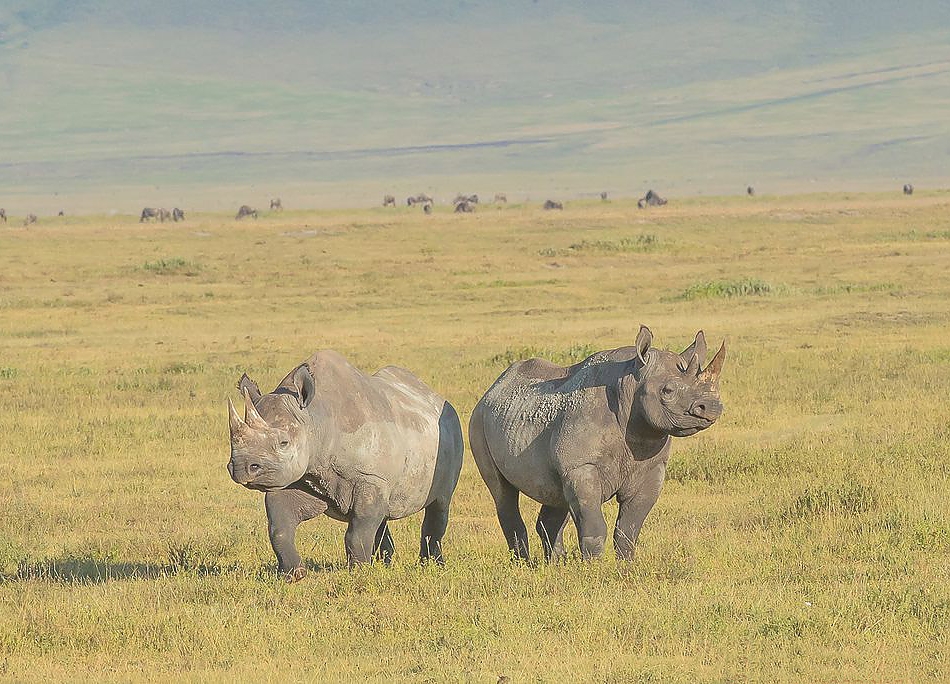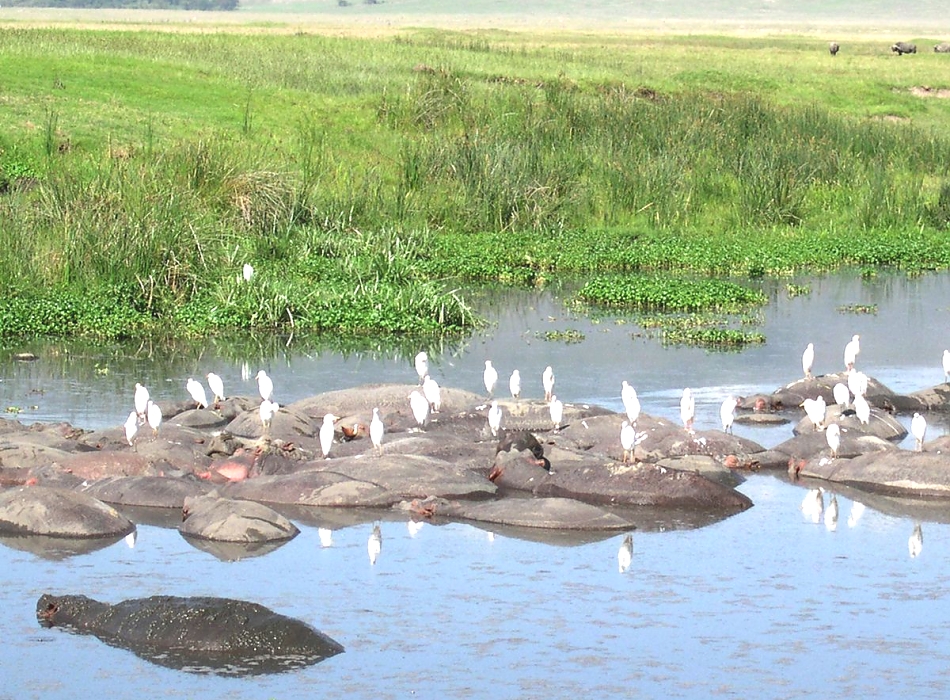

An excellent paradise, a world heritage site and an international biosphere reserve a tourist rewarding destination, a home of pastoralists, a source of water for neighboring areas, and assets of national values and an area of international interests.
Ngororngoro is a huge caldera (collapsed volcano), 250 sq km in size and 600 m deep. The crater alone has over 20,000 large animals including some of Tanzania’s remaining black rhino. In summer, enormous numbers of Serengeti migrants pass through the plains of the reserve, including 1.7 million wildebeest, 260,000 zebra, and 470,000 gazelles.
Waterbuck occur mainly near Lerai Forest; servals occur widely in the crater and on the plains to the west. Common in the reserve are lions, hartebeest, spotted hyenas and jackals. Cheetahs, although common in the reserve, are scarce in the crater itself.
The Makat soda lake is great attraction for flamingos and other water birds; while predators hide in the marsh to ambush animals that come to drink water from the river that feeds the lake. Large antelope and zebra heads come to drink while heads of hippos sun themselves in the thick lake shore mud.
The Maasai society is another amazing concept to consider at Ngorongoro because they are living with their cattle, sheep and goats while building their cultural bomas which are very interesting to many visitors.
Location:
The Ngorongoro Conservation Area is 190Kms West of Arusha it is 4 hours drive or 1 hour Charter flight. From lake Manyara is 60 Kms just a 2 hours drive. Also the Ngorongoro Conservation Authority staff bus shuttle between Arusha town and the park (H.Q.) Headquarter runs twice daily in each direction, stopping at Karatu and Mto wa Mbu.
Oldupai Gorge:
Located within the Ngorongoro Conservation Area, it is 180 km from Arusha. Humans have been Part of Ngorongoro landscape for millions of years. The earliest signs of mankind in the conservation area are at La-etoli, where hominid footprints have been preserved in volcanic rock for the past 3,600,000 years. The story continues at oldupai (Oldupai) Gorge, a river Canyon cut 100mts deep through the volcanic soil of the Serengeti Plains.
Best time to visit:
The whole year; April is the rain season. Also don’t miss a whole day in the crate where the show never stops while watching the sunset above the crater.
Bird life: More than 100 species of birds not found in the Serengeti have been spotted here, Bird found in Ngorongoro includes flamingos and other water birds.
Wild life: Has over 30,000 large animals including some of Tanzania’s last remaining black rhino. Animals are free to leave or enter the Crater but most of them stay because of the plentiful water and food available on the crater floor throughout the year.
Access: There are Organized Safaris from Arusha for those with no transport. In the crater itself, for most of the year, only 4-wheels drive Vehicles are allowed.
To do: A trip to the Oldupai Gorge (visit the paleontology museum) where the Australopithecus Boise’s skeleton was discovered. A walking Safari to Maasai Country with donkeys (2 days minimum).
Accommodation: A lodge and a rest house and Camp sister some of the lodges and Camp sites are Ngorongoro crater Lodge, Ngorongoro Serena Lodge, Ngorongoro Sopa Lodge, Ngorongoro Wildlife Lodge, Rhino Lodge and Simba Campsite.
